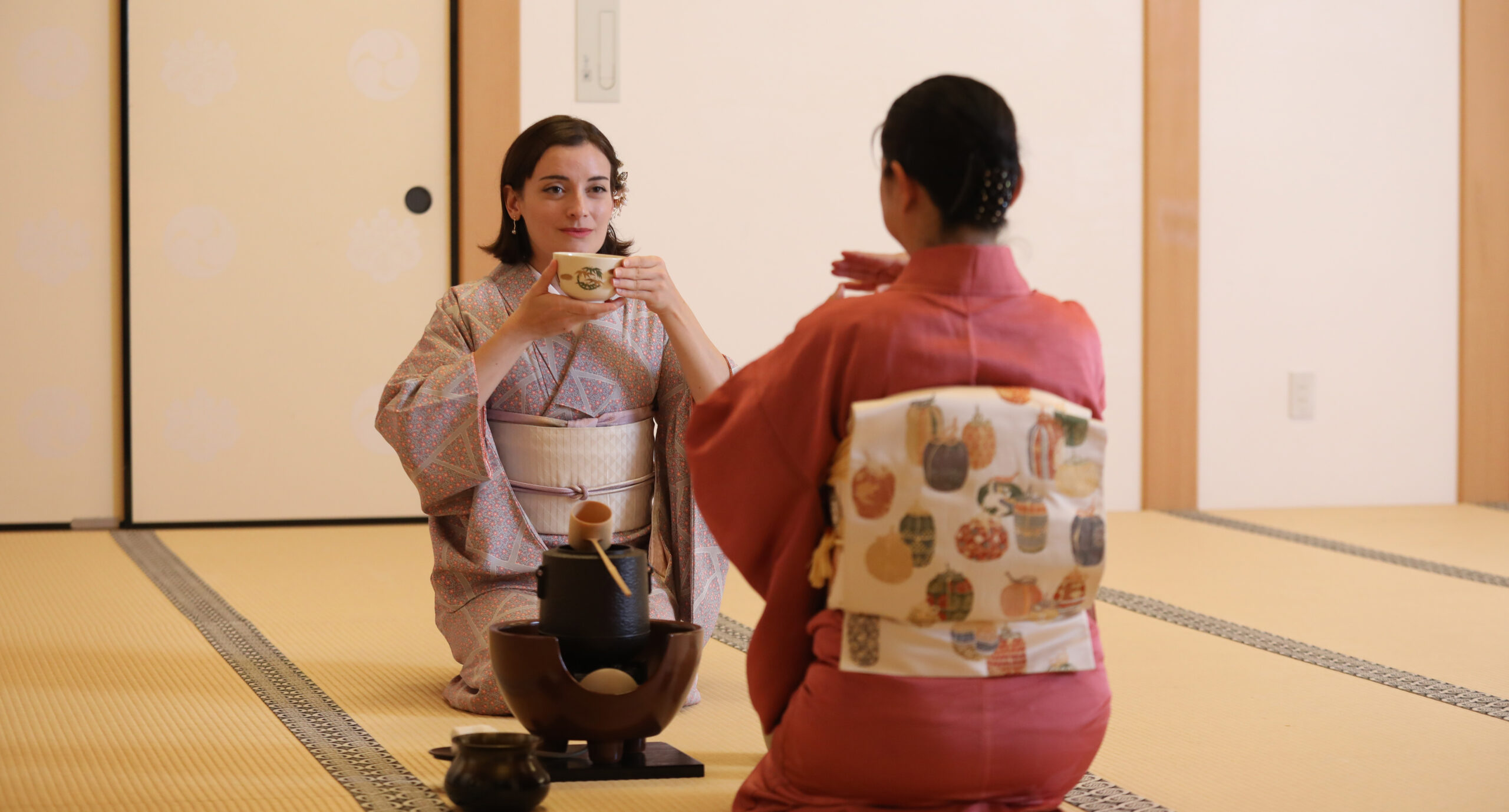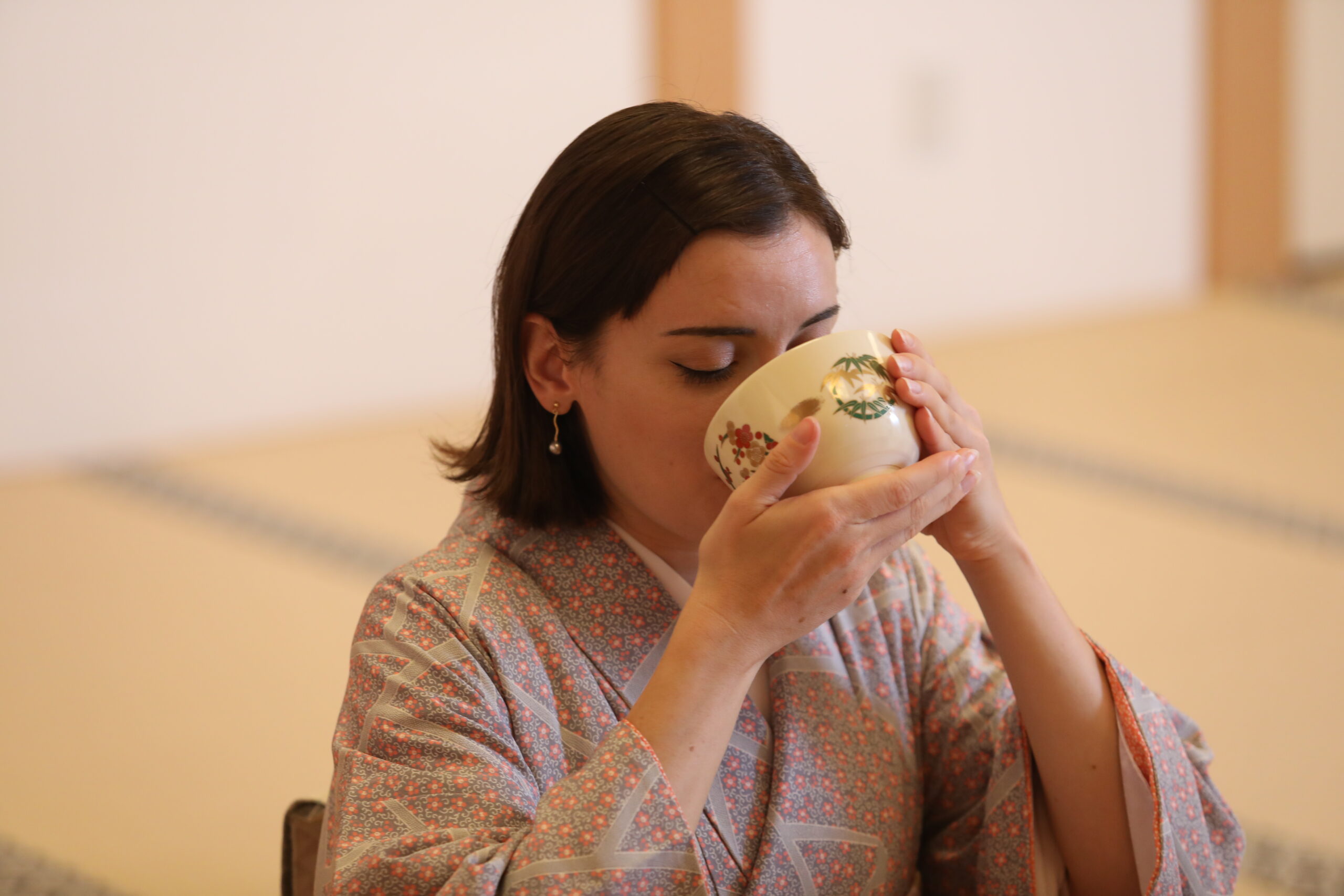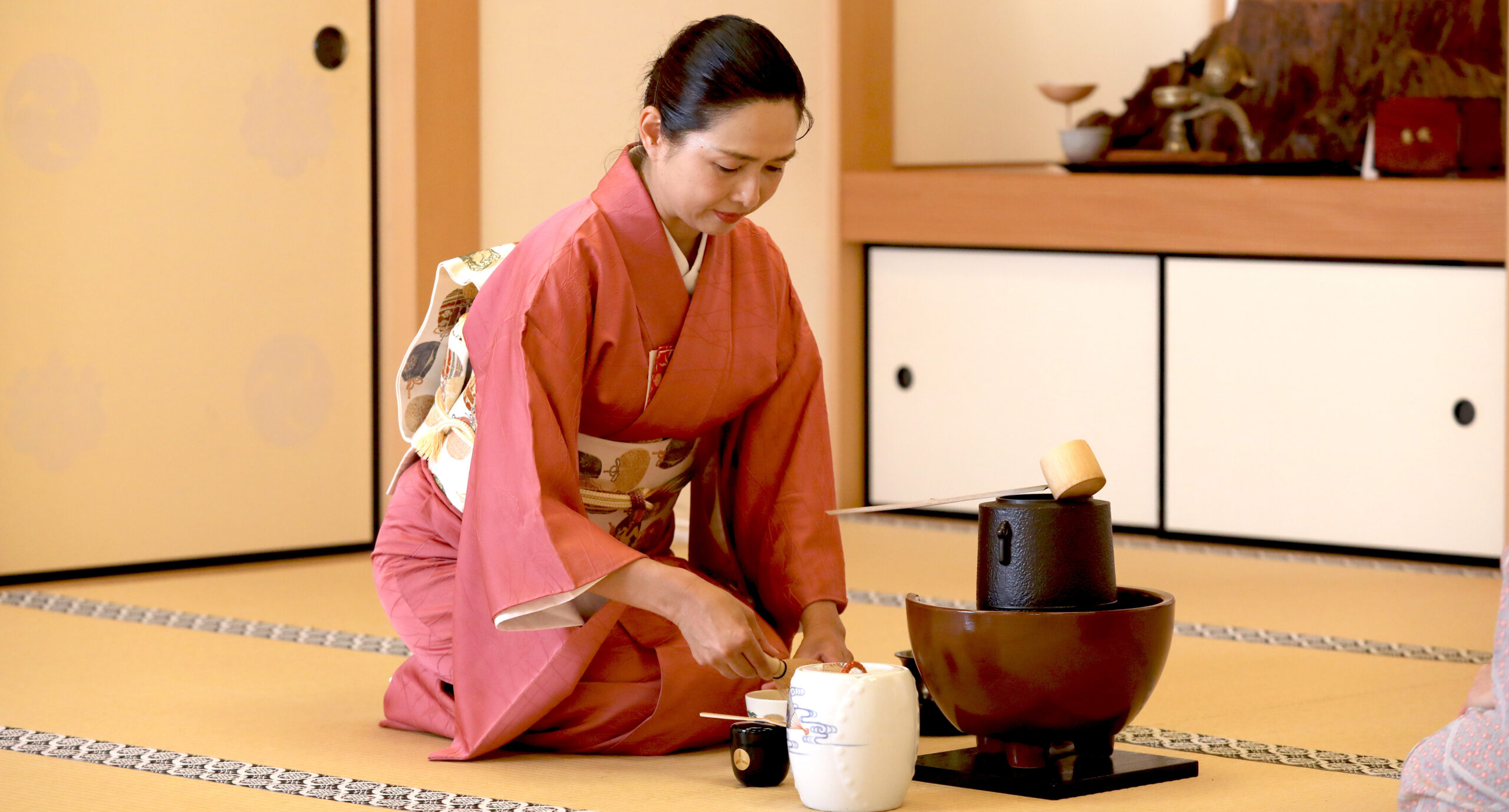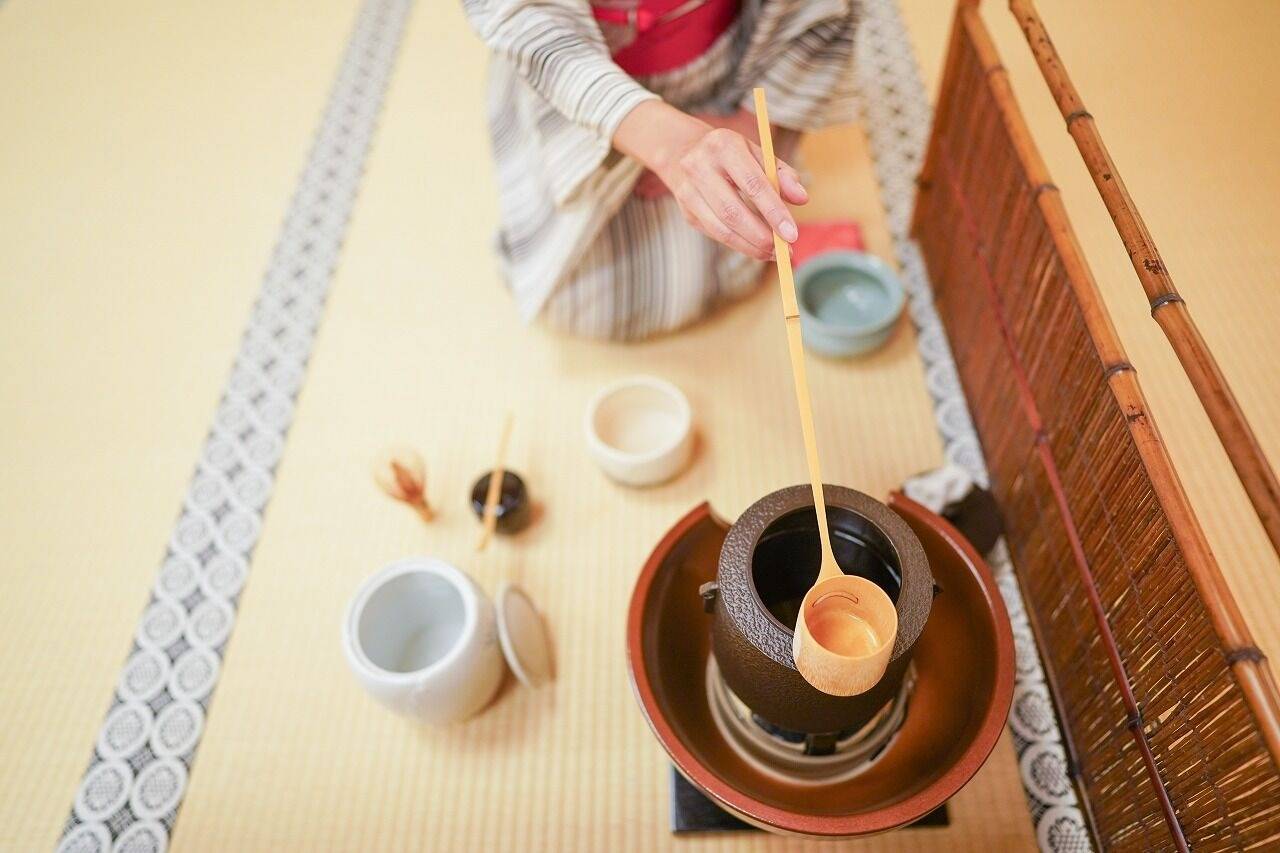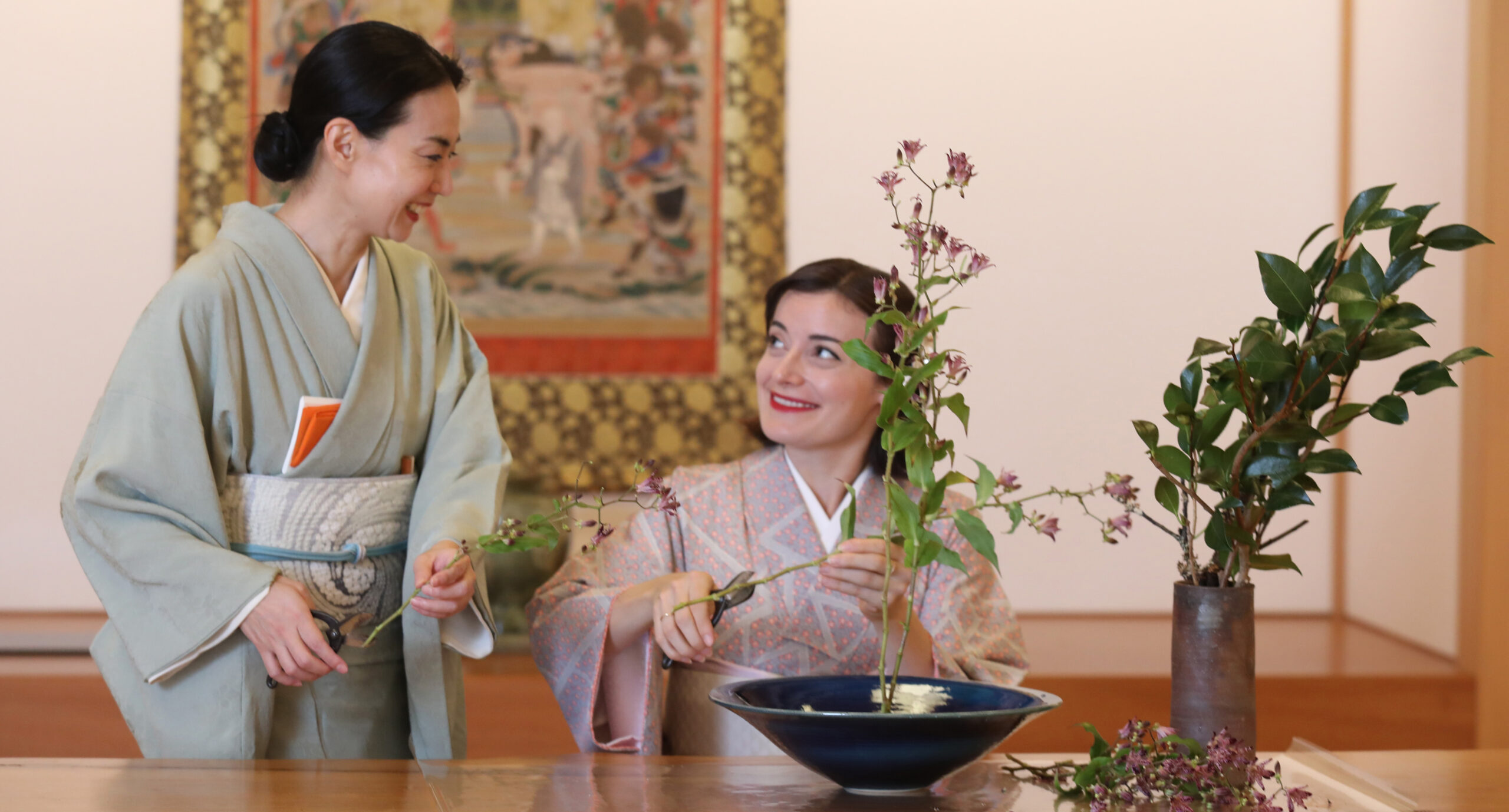The Japanese tea ceremony has many names in Japanese: chanoyu, sado or ocha, which translates to the “Way of the Tea”. The “way” stands for the right way or the perfect way that leads to awakening and peace of mind. According to Japanese beliefs, doing something that looks routine is the best path to enlightenment as long as the performer follows the perfect procedures and “forms.”
It has a long history of a thousand years and has ties to the tea traders in China. Japanese monks first brought back tea leaves during the Chinese Tang dynasty (618 AD – 907 AD) and the Japanese Nara Period and only used them in their temples for religious services.
A priest called Myōan Eisai spread the belief that green tea could be used for medicine and by drinking it regularly you were ensured good health. Back then, tea was used mostly as a medicine and only available to the rulers and the noble families. Later Zen monks used tea leaves to stay awake during late-night prayers.
Samurai in particular followed this practice and spread its popularity. Later, another priest called Murata Shukou, called the father of the tea ceremony, added more significance and rituals by making powdered tea so others could enjoy it. His focus on aesthetics became well known and heavily influences the tea ceremony that we know today.
Sen no Rikyu is a man who lived in the late 1500s and trained many warlords. He is considered the founder of the tea ceremony. He introduced the four main principles of tea ceremony: WA, KE, SEI, and JAKU (harmony, respect, purity, and tranquility). He also popularized the tea ceremony flowers and the WABI SABI style ceremony, which roughly means “simple is the best.”
“The way of tea” cannot be understood without reading the principles of Sen no Rikyu. Unfortunately, Sen no Rikyu was punished by execution ordered by the regent, who was his student. The reason is still unknown today.
Over the years Japanese turned a simple tea drinking activity into a ritual where bonding and gaining peace of mind became the main aspects. In medieval times the samurai class used tea ceremonies for forming political alliances. Nowadays, the tea ceremony is practiced as a form of art and a unique cultural tradition.

